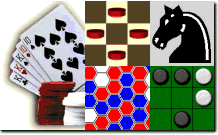
Game-playing, Analytical methods, Minimax search and Empirical Studies

|
Game-playing, Analytical methods, Minimax search and Empirical Studies |

----GTGAC-TGCGAT--AAG-----CTT--AGATCC---TCTT-AAAAT
||||| |||||| ||| ||| |||||| |||| ||
GAGGGAGACATGCGATACAAGGGATCCTTGTAGATCTGCGTCTTTAA---